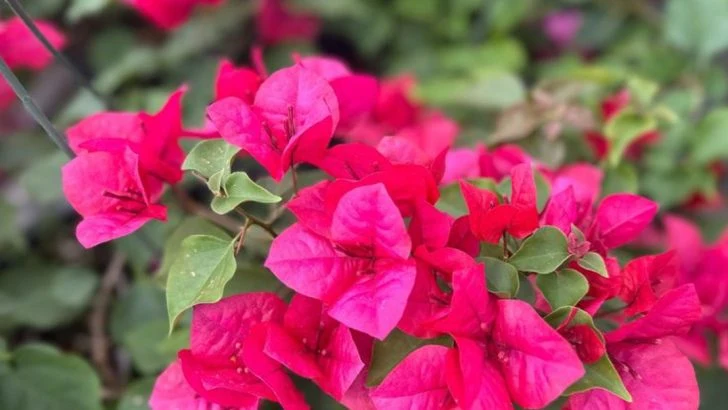When the weather turns dry and the hose starts gathering dust, many gardens begin to lose their spark. But it doesn’t have to be that way. With the right drought-tolerant shrubs, your outdoor space can stay vibrant, structured, and full of color — no matter how long the dry spell lasts.
These 16 hardy plants are masters of survival. They store water in clever ways, thrive in heat, and often bloom when everything else is wilting. But resilience doesn’t mean boring. From the deep purples of smoke bush to the golden hues of spirea, these shrubs offer the kind of visual impact that gives your garden year-round interest — with very little upkeep.
Whether you’re designing a low-water landscape, planning a Mediterranean-style garden, or just tired of watching thirsty plants fail, these are the shrubs that hold their own. They bring texture, definition, and a surprising burst of beauty — even when the rain forgets to come. Get ready to plant smarter, not harder.
Agave
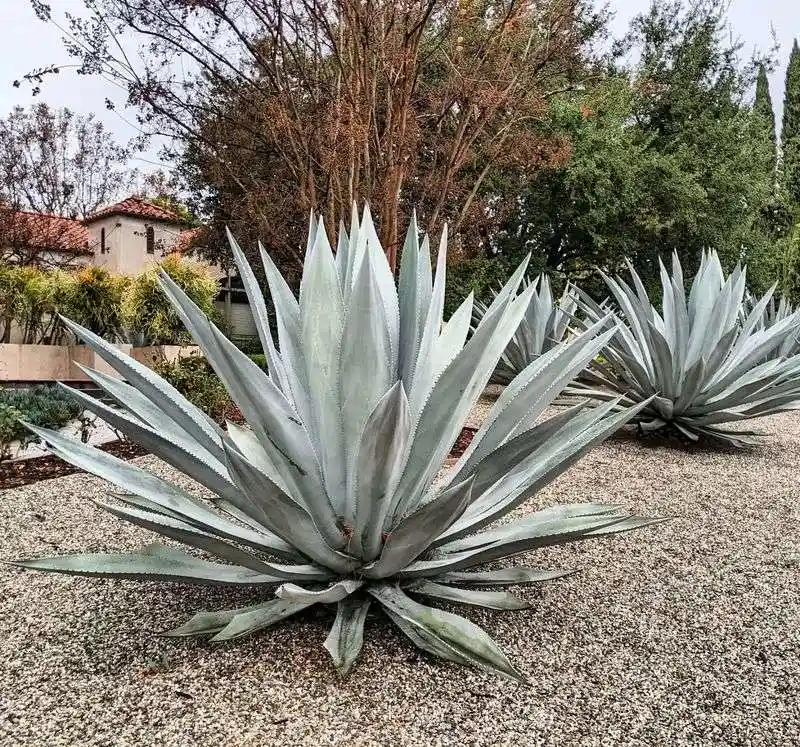
Agave stands as a testament to resilience with its tough, spiky leaves and striking silhouette. Known for its ability to thrive in arid conditions, this plant is a favorite among those looking to add a touch of the southwest to their garden. Often seen in xeriscaping, Agave is both low-maintenance and visually captivating.
While it may seem formidable with its sharp edges, it’s a fantastic choice for gardeners seeking a dramatic focal point. The plant’s slow growth rate and drought tolerance make it an excellent long-term companion. Agave proves that beauty doesn’t have to be fragile.
Lavender
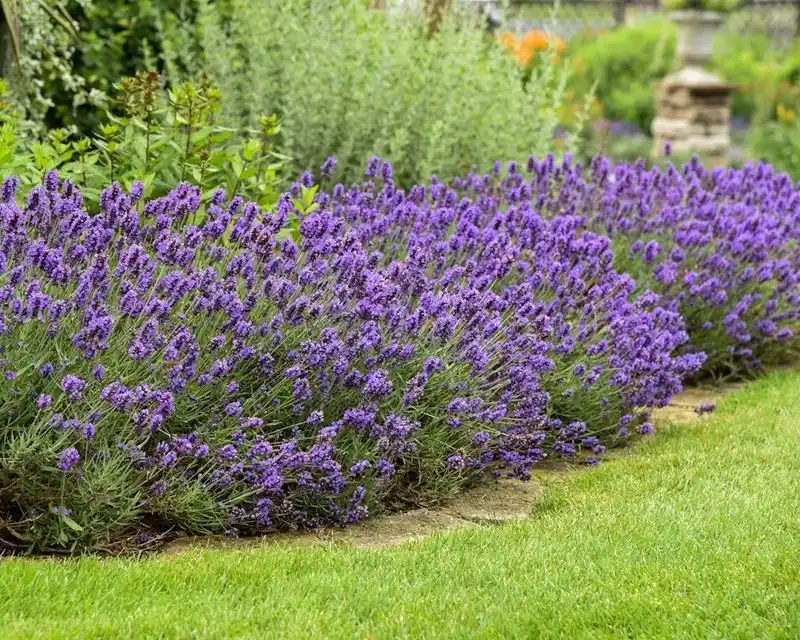
Lavender’s aromatic presence isn’t just for the senses; this shrub offers a feast for the eyes with its vivid purple blooms. Known for its calming effects, lavender also plays a key role in attracting pollinators to the garden. Its drought tolerance makes it a staple in low-water landscapes.
Beyond its sensory appeal, lavender lends an old-world charm reminiscent of sun-soaked European countrysides. Whether lining a walkway or filling a container, its versatility is unmatched. Lavender effortlessly bridges the gap between functionality and aesthetics, making it a garden favorite.
Oleander
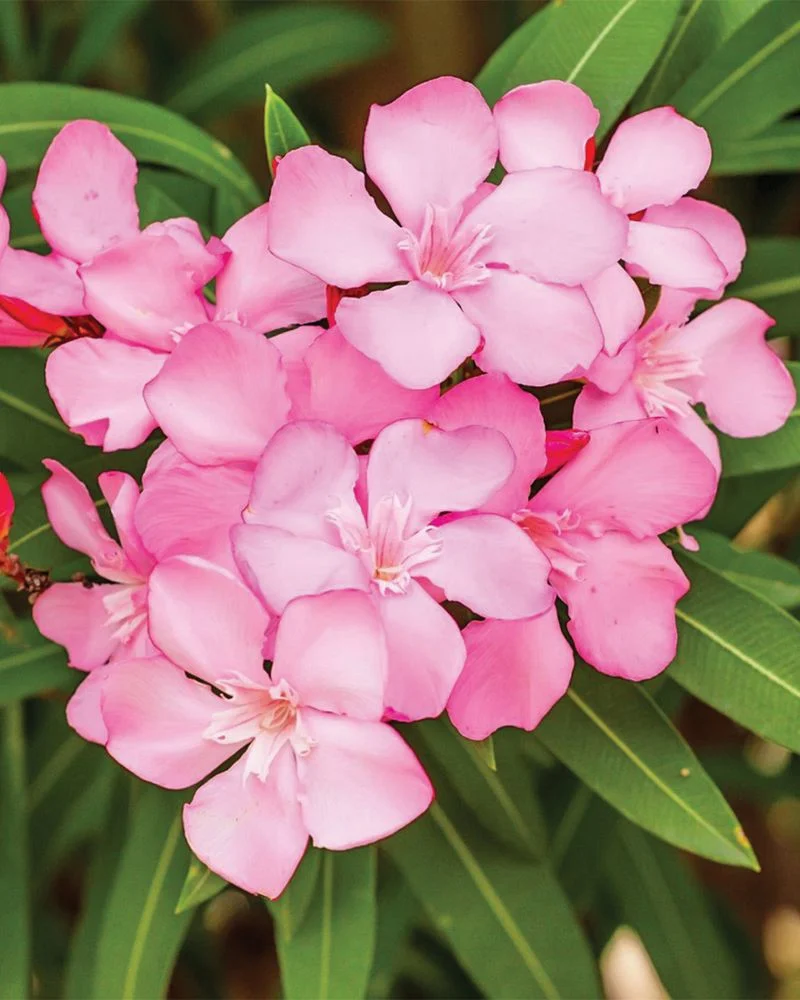
With a vibrant burst of color, Oleander thrives where other plants falter. Its ability to withstand high temperatures and grow in various soil types makes it a mainstay in challenging climates. The shrub’s lush, layered flowers add a tropical feel that belies its resilience.
Despite its beauty, caution is advised as all parts of Oleander are toxic if ingested. It’s a paradoxical plant, combining allure with a need for respect. Oleander is a testament to nature’s ability to balance beauty with survival in less-than-ideal conditions.
Russian Sage
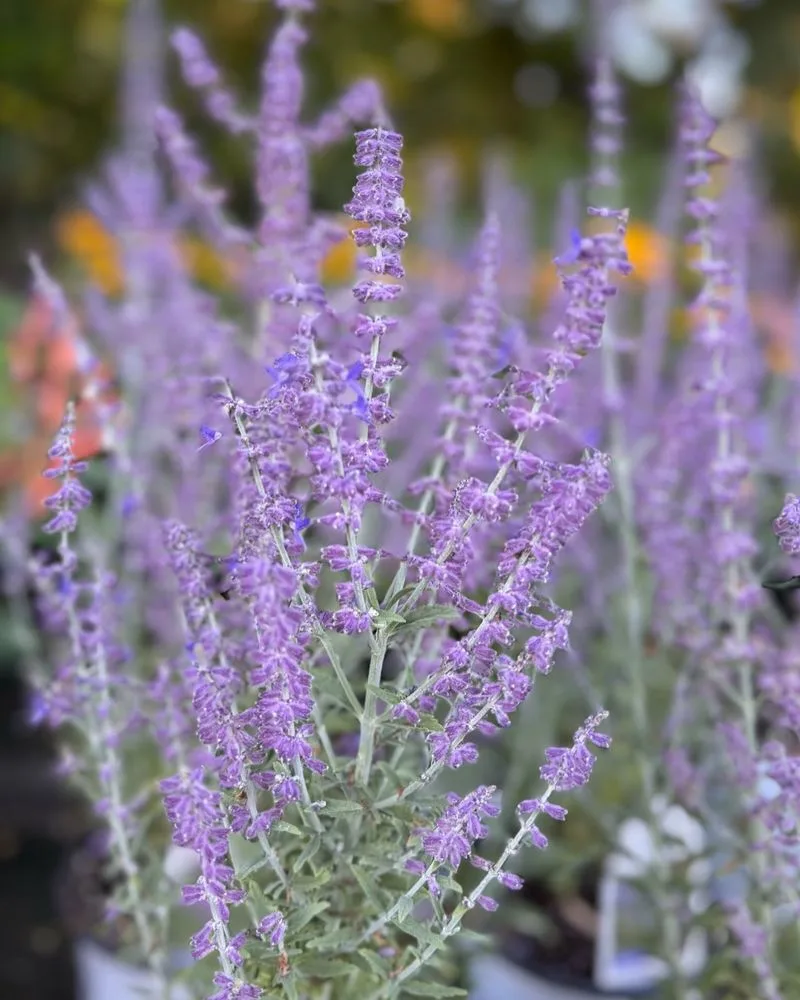
Russian Sage commands attention with its long, wispy stems and lavender-blue flowers. Its hardy nature and ability to cope with drought make it a perfect candidate for low-maintenance gardens. The silvery foliage offers a stunning contrast to other green plants, adding depth and texture.
This shrub not only survives but thrives in poor soil, making it a gardener’s ally in challenging conditions. As a bonus, Russian Sage is a magnet for bees, ensuring your garden remains a hub of activity. Its elegance is matched by its practicality.
Desert Willow
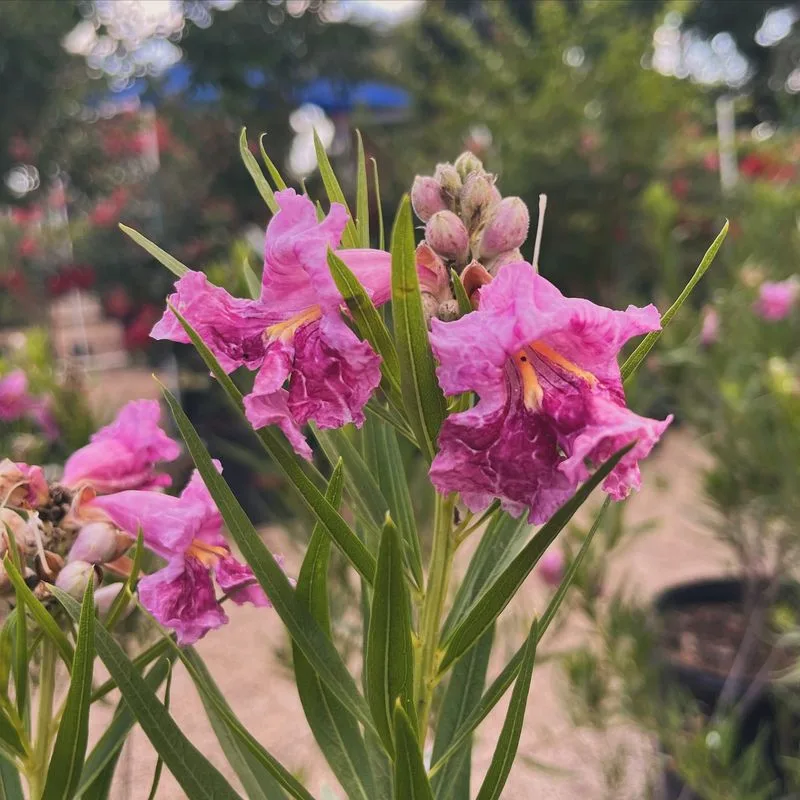
Desert Willow’s delicate blossoms belie its robust nature. This shrub-tree hybrid graces gardens with its trumpet-shaped flowers and willow-like leaves. It’s perfectly adapted to arid environments, making it an ideal choice for water-conscious gardeners.
Its long blooming season provides continuous interest throughout the warmer months. Despite its name, Desert Willow isn’t a true willow, but its graceful branches offer a similar aesthetic. This plant’s charm lies in its ability to evoke a sense of tranquility amidst barren surroundings.
Texas Sage
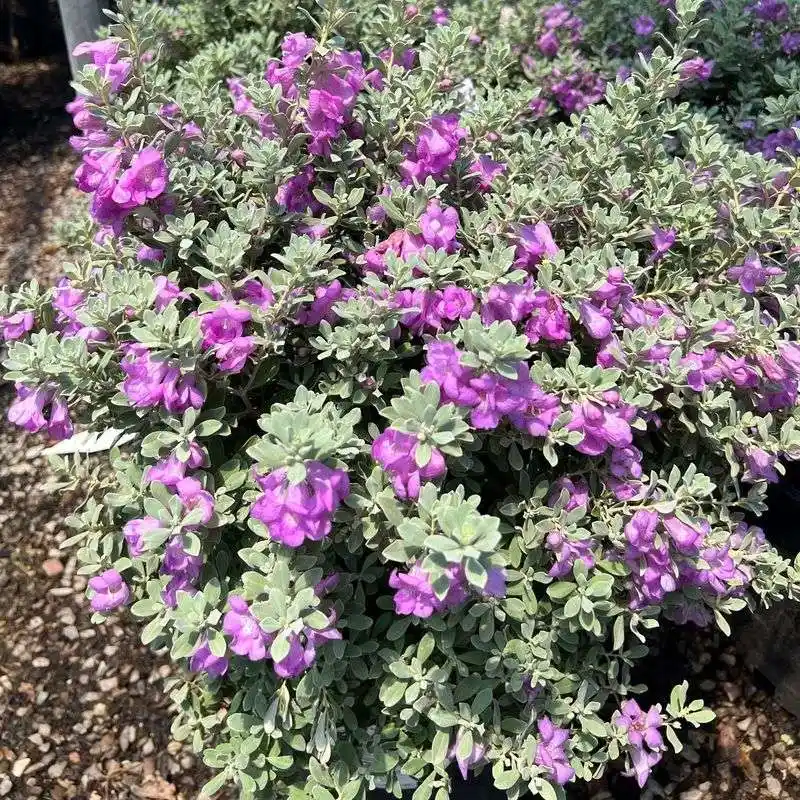
Texas Sage, often called the “barometer bush,” displays its purple blooms in response to humidity, hinting at impending rain. This quirky trait, combined with its silvery foliage, makes it a unique addition to any garden.
Not only does Texas Sage thrive in arid climates, but it also requires minimal care, making it perfect for those who prefer a hands-off approach. Its ability to attract butterflies and resist deer adds to its appeal. Texas Sage is as practical as it is beautiful, offering both form and function.
Manzanita
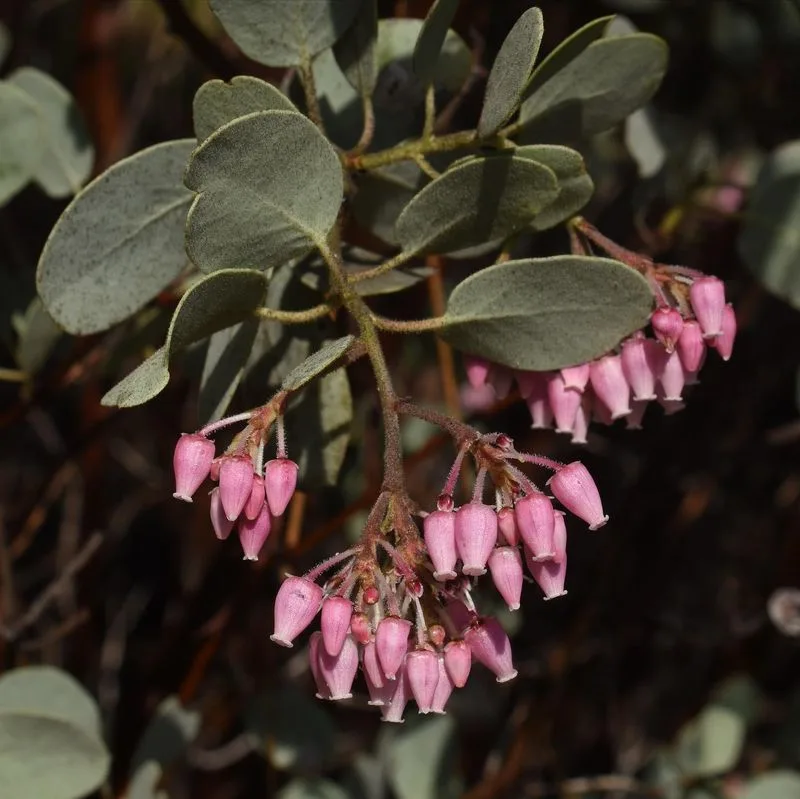
Manzanita’s twisting, red bark and evergreen leaves provide year-round interest. This shrub is well-suited to dry conditions, thriving in areas where others may struggle. Its branches, reminiscent of abstract art, make a statement even in the off-season.
Besides its visual appeal, Manzanita’s small, bell-shaped flowers attract hummingbirds, adding life to your garden. Its slow growth and drought tolerance ensure it remains a standout feature for years. With Manzanita, you get a plant that’s as hardy as it is stunning.
Juniper

Juniper is the silent workhorse of the garden, known for its tough nature and versatility. Its needle-like foliage offers a range of hues from deep green to blue-gray, providing a backdrop for more vibrant plants.
This hardy shrub thrives in poor soil and requires little water, making it ideal for those looking to minimize maintenance. Juniper’s dense growth offers excellent ground coverage and erosion control, proving that practicality and beauty can coexist. It stands as a reminder that sometimes, simplicity is key.
Bottlebrush

With its signature red, brush-like flowers, the Bottlebrush plant is hard to ignore. This shrub brings a splash of color to drought-prone areas, where its low water needs are a definite advantage.
Each flower spike is a magnet for hummingbirds and bees, ensuring your garden stays buzzing with life. Despite its delicate appearance, the Bottlebrush is remarkably tough, withstanding heat and dry spells with ease. It’s a vibrant reminder that even the toughest plants can offer a wealth of beauty.
Creosote Bush
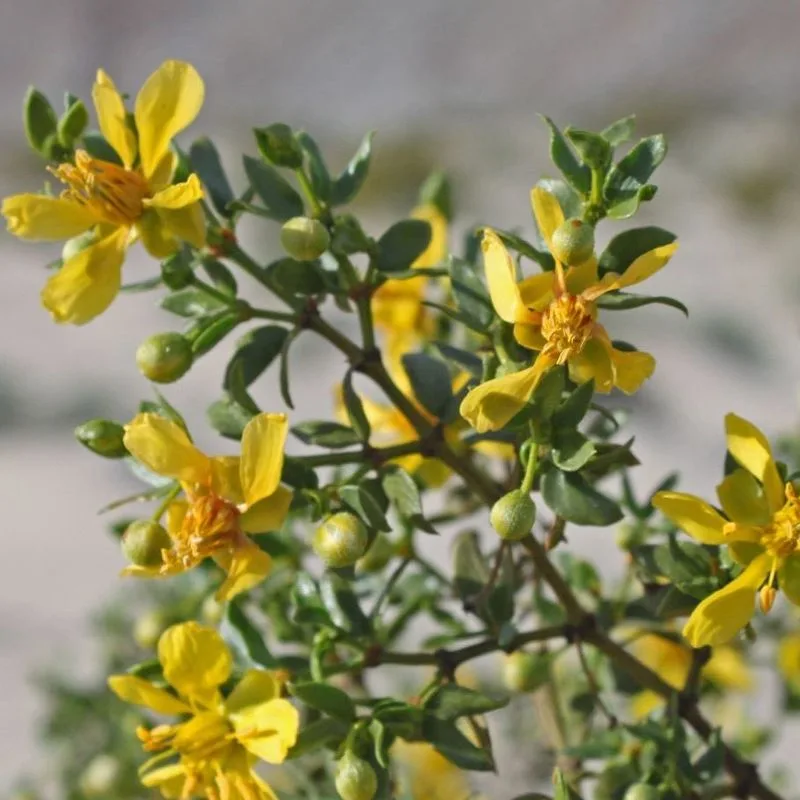
Creosote Bush embodies the spirit of the desert with its hardy, adaptable nature. Known for its aromatic leaves and yellow flowers, it thrives where other plants cannot. It’s a symbol of endurance, capable of surviving extreme heat and prolonged droughts.
Beyond its resilience, Creosote Bush plays a vital role in desert ecology, providing shelter and food for local wildlife. Its unique charm lies in its ability to thrive in harsh environments, offering a touch of green where it’s least expected. It’s a testament to nature’s tenacity.
Bougainvillea
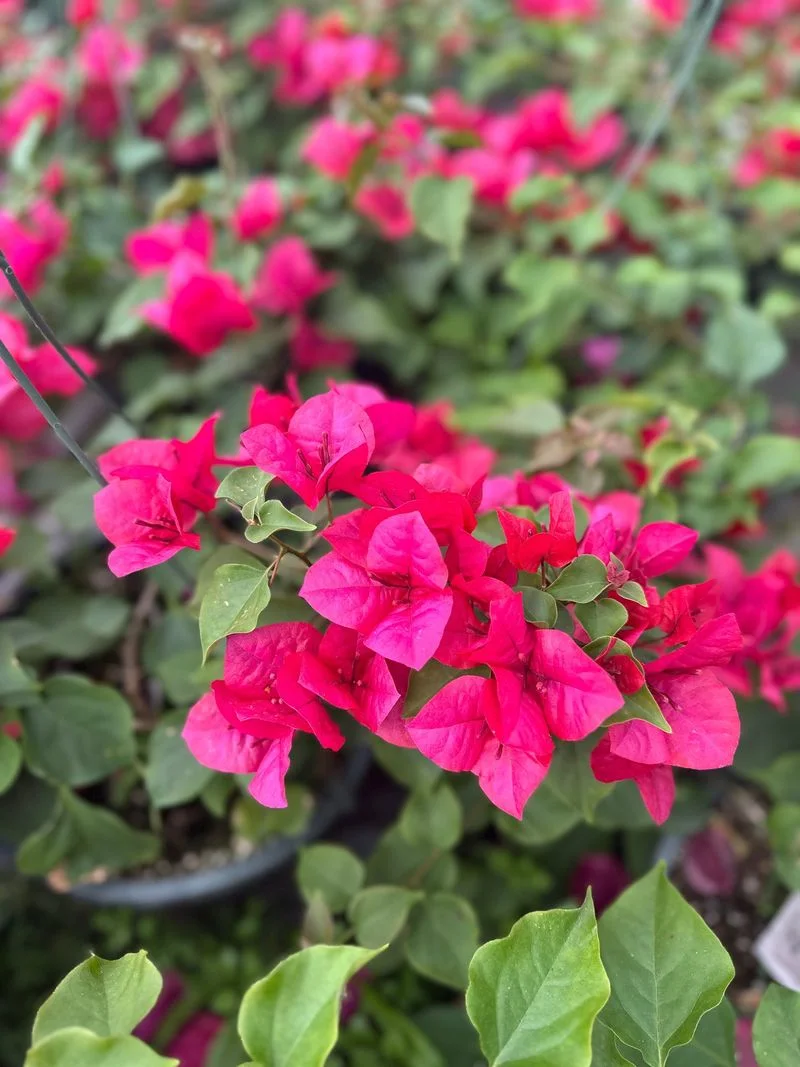
Bougainvillea is renowned for its vibrant bracts that transform landscapes with their riot of color. This shrub’s vigorous growth and drought tolerance make it a favorite in warm climates. It climbs and sprawls, creating cascades of color that mask its hardy nature.
While it requires minimal water once established, Bougainvillea rewards with a profusion of blooms almost year-round. It’s an exuberant reminder that resilience and beauty can go hand in hand. This plant offers a dazzling display with minimal effort, perfect for brightening up any space.
Rock Rose
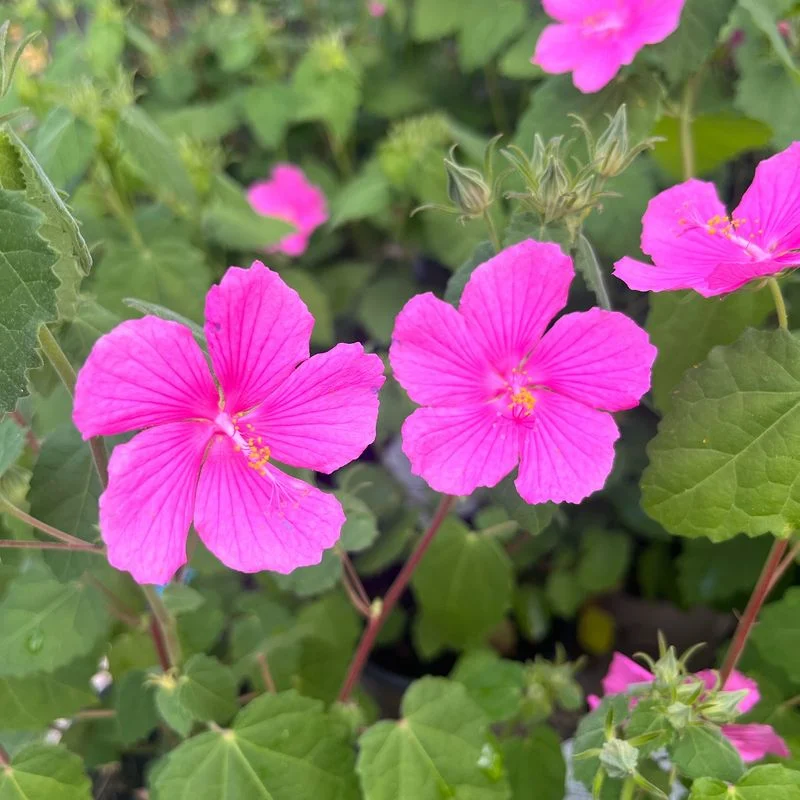
Rock Rose combines beauty with toughness, featuring delicate flowers that belie its resilient nature. This shrub thrives in rocky, dry soils where others might fail. Its blossoms, resembling wild roses, add a gentle touch to otherwise barren landscapes.
Though short-lived, the flowers bloom profusely, providing continuous color throughout the season. Rock Rose is a gardener’s ally, offering both ornamental value and drought tolerance. It stands as a testament to the fact that even the smallest blooms can make a significant impact.
Pineapple Guava
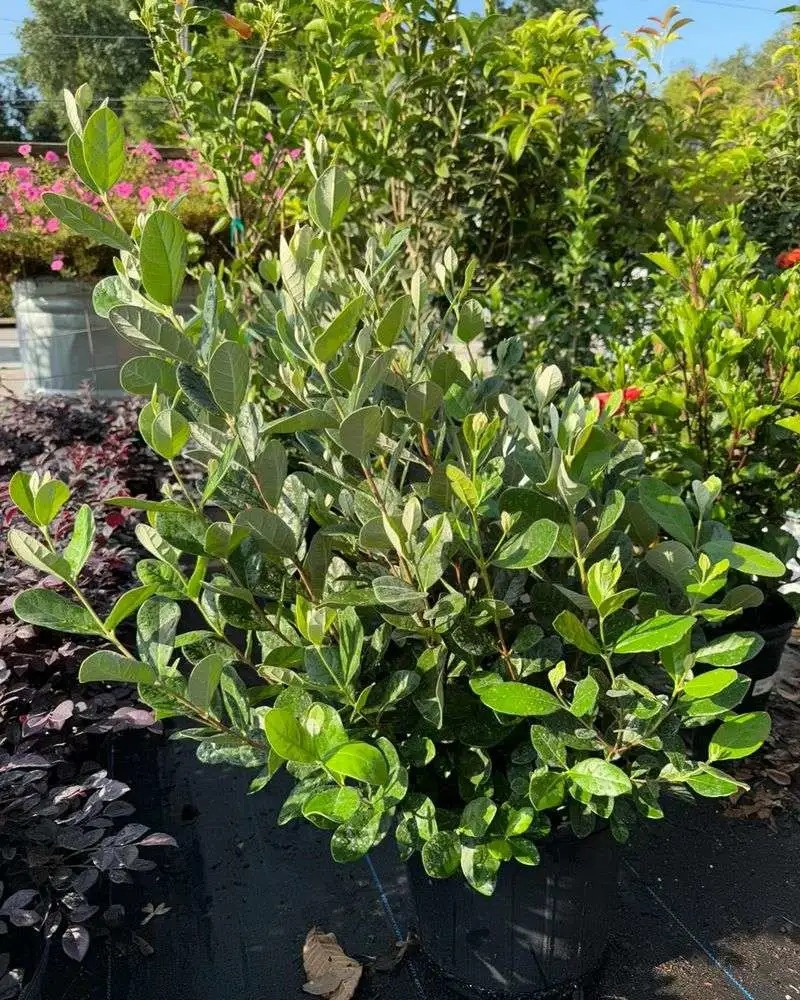
Pineapple Guava offers more than just ornamental appeal; it also produces edible fruit, making it a dual-purpose garden addition. Its thick, glossy leaves and white blossoms enhance visual interest, while its drought tolerance ensures longevity.
This shrub doubles as a talking point, with its exotic fruits piquing curiosity. Pineapple Guava thrives on neglect, requiring minimal water and care. It’s a delightful blend of form and function, providing both sustenance and beauty in equal measure.
Yarrow
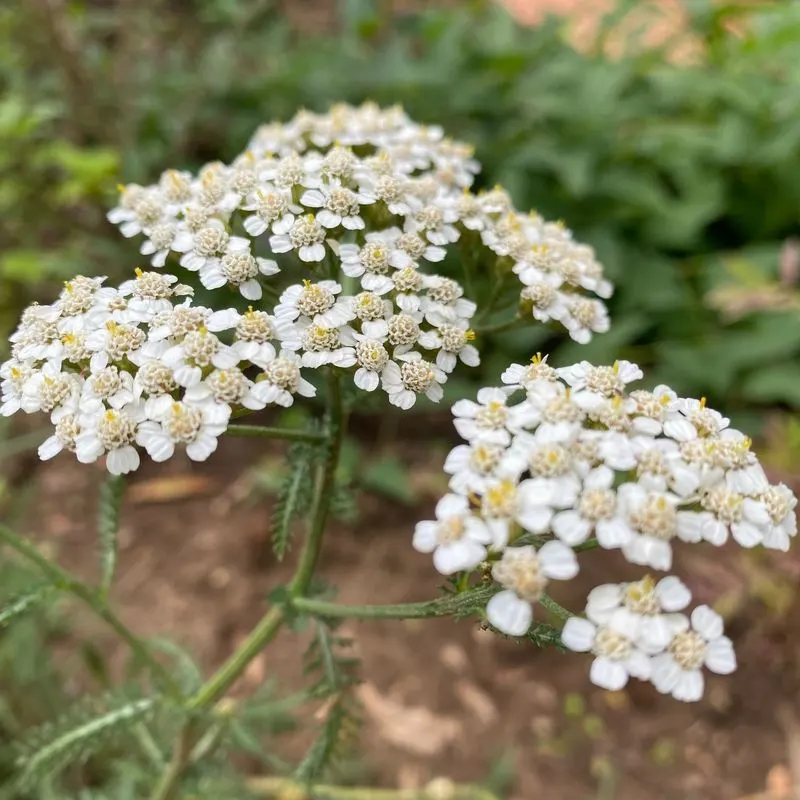
Yarrow is a formidable force in drought-tolerant gardening with its feathery foliage and bright flower clusters. This hardy perennial excels in poor soil and requires minimal water, making it a reliable choice for xeriscaping.
The flowers, ranging from white to yellow, attract beneficial insects, promoting a healthy garden ecosystem. Yarrow’s resilience is matched by its versatility, as it fits seamlessly into borders, meadows, and rock gardens. It proves that enduring beauty can flourish even in the harshest of conditions.
Pride of Madeira
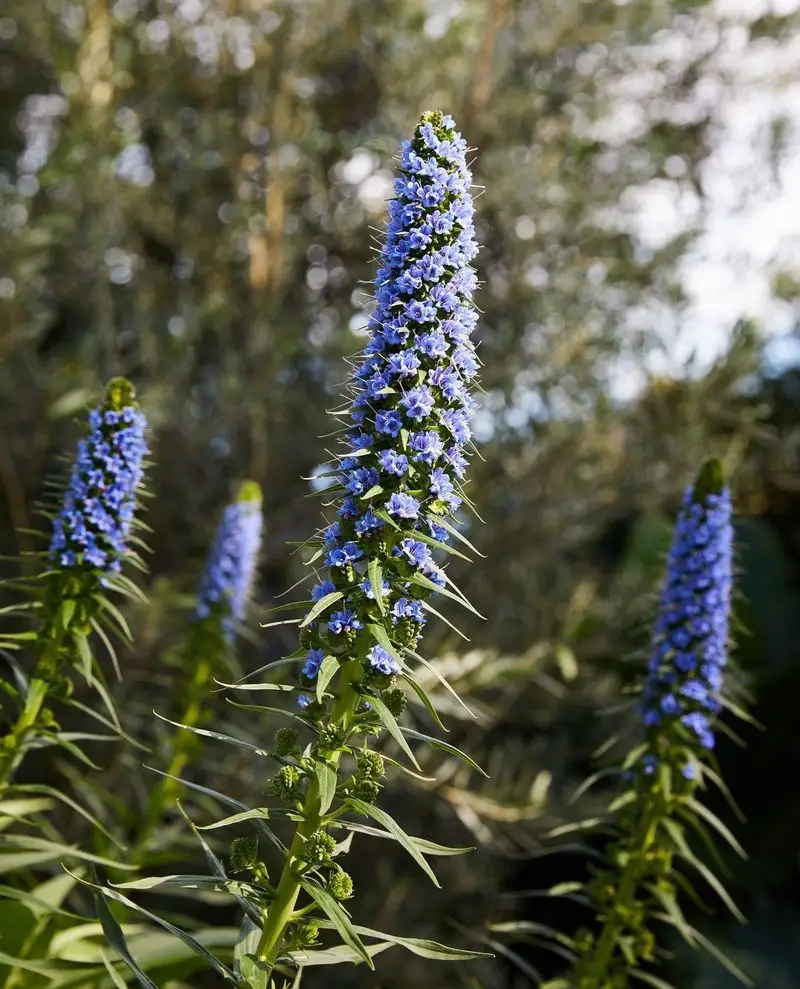
Pride of Madeira captivates with its towering blue flower spikes and lush foliage. This shrub is well-suited to coastal areas, thriving in sandy, dry soils where others may falter. Its robust nature makes it a favorite for gardeners seeking low-maintenance options.
The striking blooms are not only visually arresting but also attract a multitude of pollinators, keeping the garden lively. Pride of Madeira exemplifies the bold beauty that can be achieved in drought-prone landscapes, offering a splash of color where it’s needed most.
Red Yucca
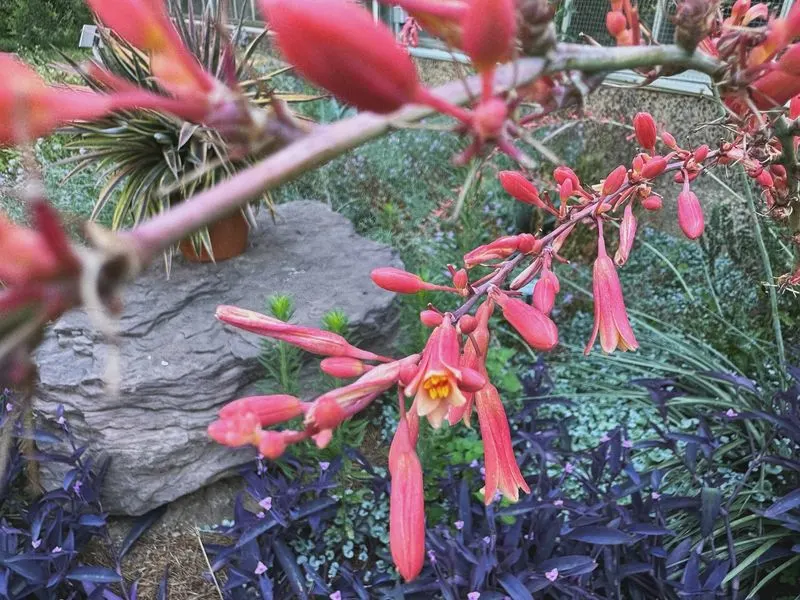
Red Yucca offers a touch of elegance with its slender, arching leaves and tall, coral-red flower spikes. This plant thrives in dry conditions, offering a burst of color and texture to any arid garden setting.
Beyond its beauty, Red Yucca is a magnet for hummingbirds, ensuring your garden buzzes with activity. Its resilience is its charm, requiring little more than sun and well-drained soil to flourish. Red Yucca stands as a testament to the fact that even the most delicate appearances can be underpinned by strength.

